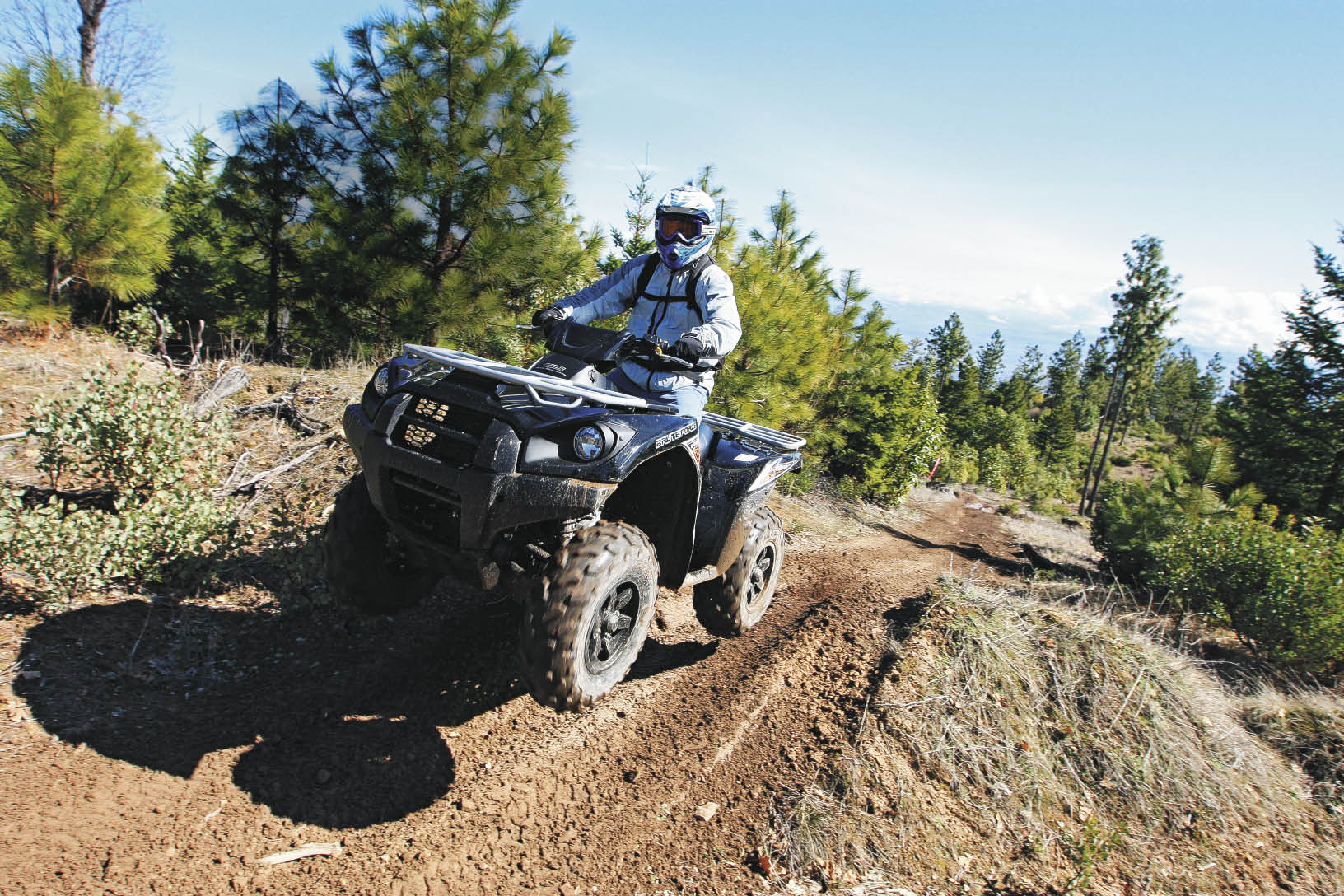 We've all seen this scenario in various wheeled industries: a manufacturer introduces a magnificent vehicle and rides it to the top only to then rest on its laurels and watch as other vehicles pass by from manufacturers who continually innovate.
We've all seen this scenario in various wheeled industries: a manufacturer introduces a magnificent vehicle and rides it to the top only to then rest on its laurels and watch as other vehicles pass by from manufacturers who continually innovate.
That won't be said of Kawasaki and its flagship Brute Force 750 ATV, consistently one of the best models in its segment and for good reason.
And there's no reason to believe Kawi won't be keeping the pressure on for 2012 with serious upgrades to the Brute Force 750, most notably electric power 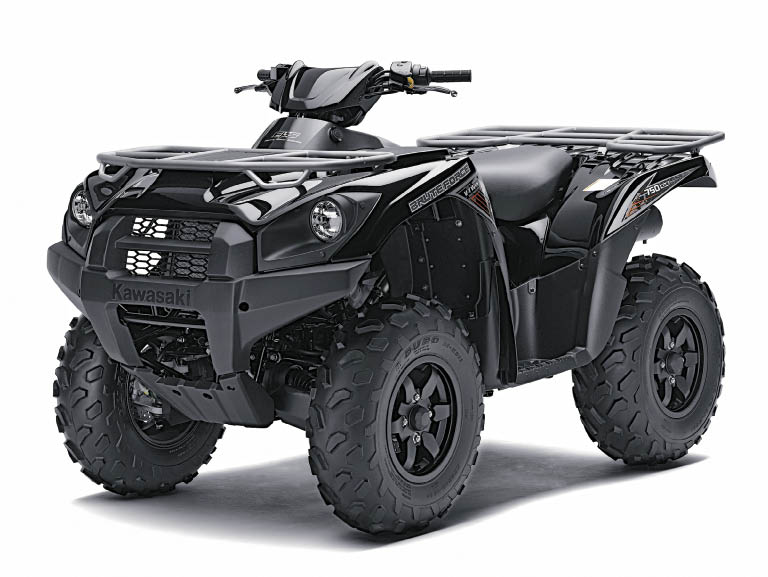 steering and impressive engine changes.
steering and impressive engine changes.
We were invited to see, feel and test those changes this spring when Kawasaki rolled out the new Brute Force 750 4x4i EPS at John's Peak OHV Area outside Medford, OR. It was evident that Kawasaki was confident in the performance of the 2012 Brute Force 750 by its choice of riding locations. John's Peak (you should put this area on your list of mustrides) offers plenty of challenges, definitely enough to where we could see how the Brute Force performs in all kinds of conditions, except sand. In fact, the timing of the event was probably in our favor in that there was still snow at the higher elevations, which added to the challenge and excitement of the ride.
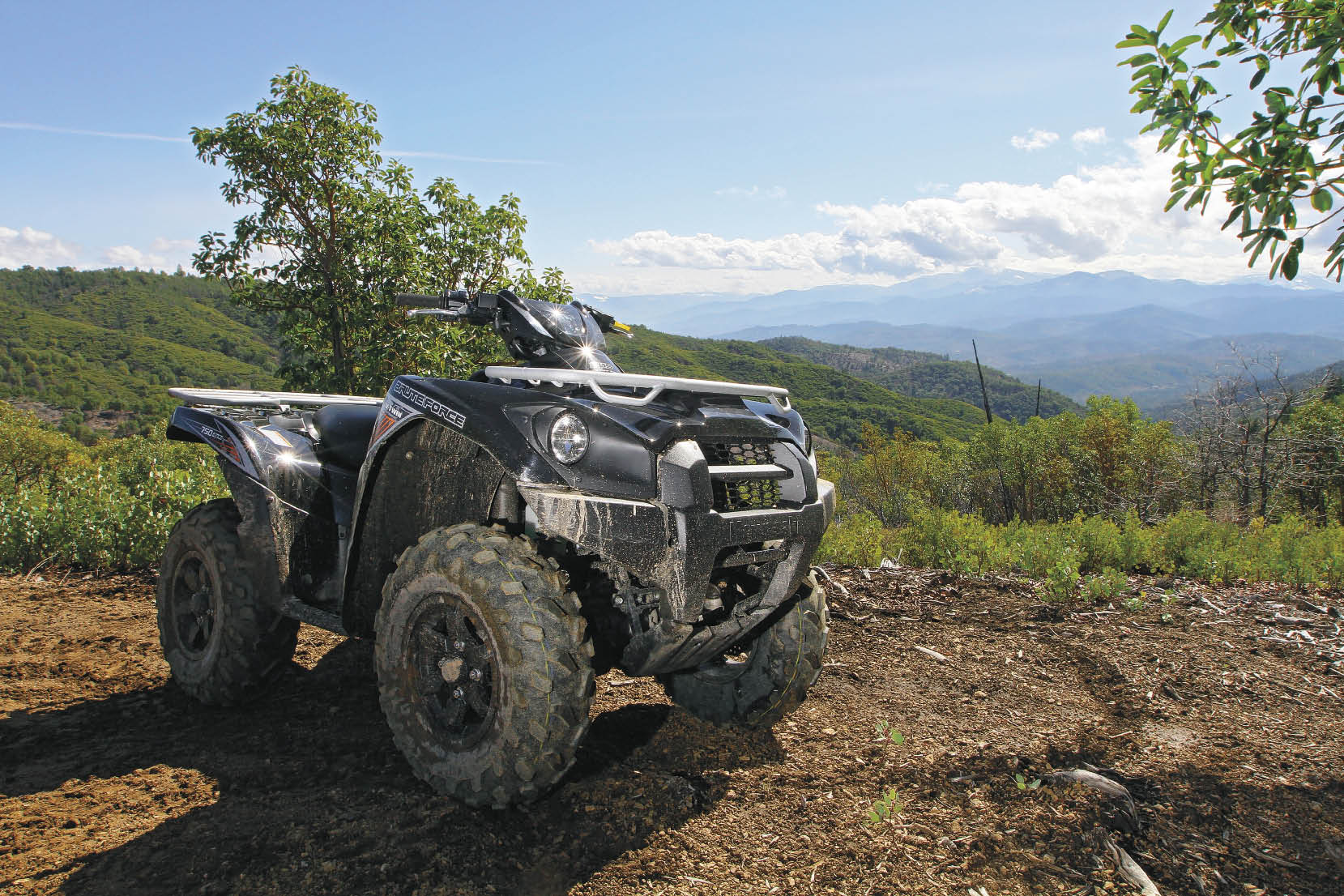 Riding Conditions
Riding Conditions
Why even talk about the riding conditions? Because any vehicle can feel good down a smooth, flat trail. But that's not how we ride, nor is it how most of you ride, we're guessing.
Here's what we encountered at John's Peak: steep sections, wide and narrow forest roads, stumps, rocks, downed trees, water bars, mud, snow, water holes and one section that didn't even look like a trail but more like a goat trail through the trees littered with downfall of all sizes.
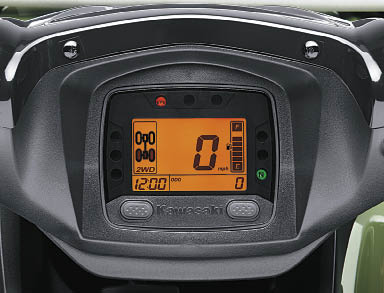 Through all that, the Brute Force 750 4x4i EPS didn't disappoint. We won't go so far as to say the vehicle was never challenged during our ride but in all those conditions the Brute Force exhibited good traction, good power and good stability.
Through all that, the Brute Force 750 4x4i EPS didn't disappoint. We won't go so far as to say the vehicle was never challenged during our ride but in all those conditions the Brute Force exhibited good traction, good power and good stability.
It we were asked what improvement Kawi made for 2012 on the Brute Force 750 that impressed us the most, that's not quite as easy a choice as you might think. Of course the EPS is welcome and performed flawlessly during our ride, but it's a feature quite frankly that performance ATVs need to be competitive these days. So it was expected that Kawi would bring EPS to the game. We might actually be more inclined to say the engine improvements are tops on our list. 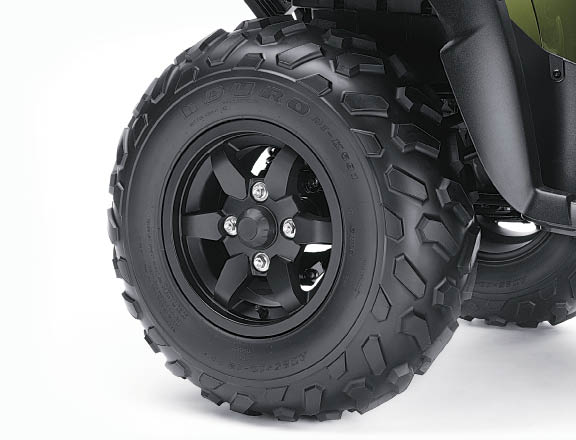 We're not strictly horsepower hounds but we do like a vehicle with a stout motor and the 749cc direct fuel-injected V-twin answers the call.
We're not strictly horsepower hounds but we do like a vehicle with a stout motor and the 749cc direct fuel-injected V-twin answers the call.
Kawasaki bumped up the power with revised tuning, a new cylinder head and increased compression ratio (9.3:1 compared to 2011's 8.8). The 2012 750 is actually using smaller cylinder heads, borrowing the 633 heads from Kawi's KVF650F engine rather than using the 749s from the 750. That gives the engine a little more snap and a cleaner burn. Vince Iorio, Kawasaki product manager, said that snap is thanks to the dome shape of the 650 head. Iorio added, "That was an easy change but a big benefit."
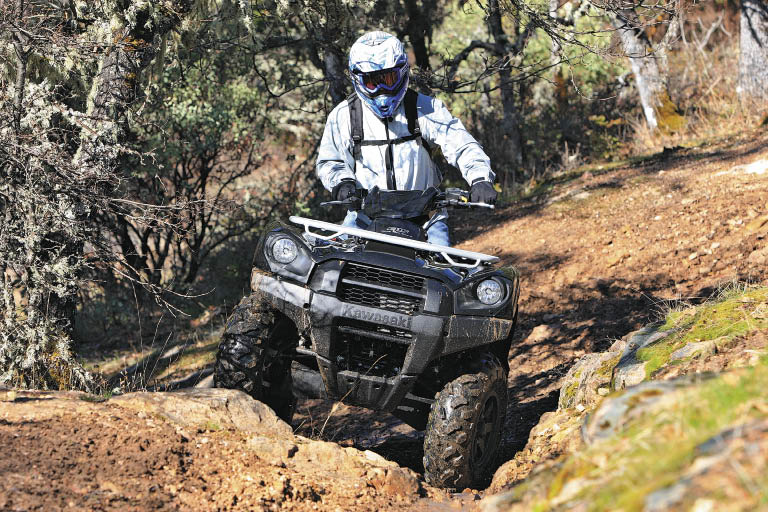 No Lack Of Power
No Lack Of Power
The 750's max rpm is 7350 and we found the engine to have a broad, useable powerband from bottom to top with excellent acceleration and torque. This Brute Force never lacked for power, even when we were climbing in tight, technical sections in the snow and mud and there was good throttle response (or snap as Kawasaki likes to call it) when we were jumping some water bars. The torque was welcome when we crawled up a rocky section on a hillside which had a fun amount of rocks, boulders and logs.
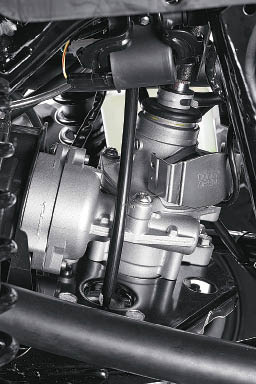 When it came to tuning the 750 for 2012, Kawasaki revised the fuel injection mapping. New crankcase passageways equalize the pressure, which stabilizes the oil level, reducing oil consumption and blow-by gasses. Also helping reduce the oil consumption are thinner top and oil rings.
When it came to tuning the 750 for 2012, Kawasaki revised the fuel injection mapping. New crankcase passageways equalize the pressure, which stabilizes the oil level, reducing oil consumption and blow-by gasses. Also helping reduce the oil consumption are thinner top and oil rings.
The bump in power necessitated increasing the cooling capacity of the Brute Force 750. A larger radiator (2012: 278mm x340mm x 24mm vs. 2011 274x300x22) is being used, the fan diameter has been increased from 210mm to 230mm and the radiator hose is bigger (24mm compared to 19mm). The radiator has been mounted higher in the chassis as well, just as an added precaution to protect against mud and debris.
Having just gone on and on about the engine changes and resulting boost in horsepower, we do think the EPS ranks right up there when it comes to impressive changes or at least it's on an even plane with the engine. They definitely complement each other.
Speed Sensitive
The EPS is speed sensitive, which simply means it has a variable assist, giving the 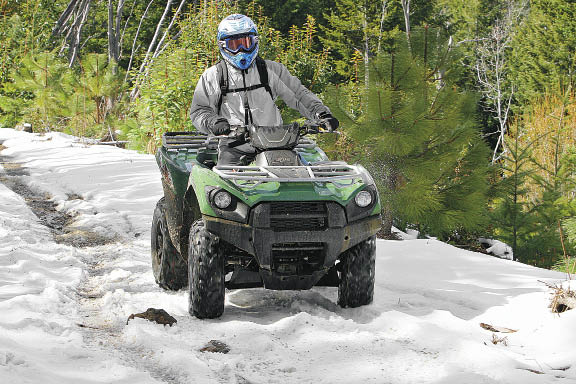 vehicle increased assistance at low speeds, gradually lessening that assistance as the speeds increase. You wouldn't want any steering assistance at high speeds because it can upset the vehicle. But at lower speeds, while turning on tight, twisty trails or going over rocks, logs and other obstacles, it's a must. Kawasaki's EPS unit, manufactured by KYB, includes an ECU (stored in an aluminum case to protect it from water), actuator, speed sensor and battery.
vehicle increased assistance at low speeds, gradually lessening that assistance as the speeds increase. You wouldn't want any steering assistance at high speeds because it can upset the vehicle. But at lower speeds, while turning on tight, twisty trails or going over rocks, logs and other obstacles, it's a must. Kawasaki's EPS unit, manufactured by KYB, includes an ECU (stored in an aluminum case to protect it from water), actuator, speed sensor and battery.
Turning the handlebars causes a signal to be sent to the electronic steering control unit, initiating power assist. The speed sensor helps determine just how much steering assistance is needed. Not only does the EPS help in low speed steering, it 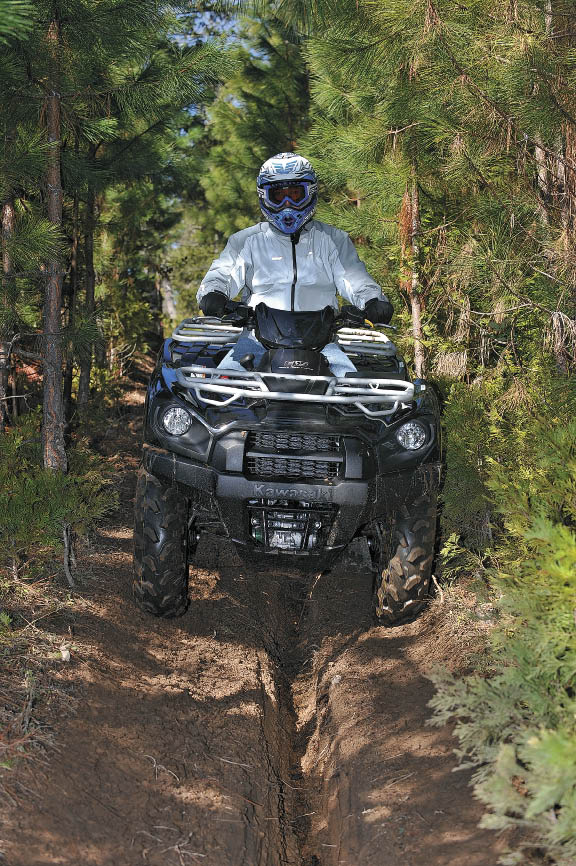 also improves ride quality and control by acting as a damping system. It helps reduce bump steer and kickback to the bars caused by wheel impacts.
also improves ride quality and control by acting as a damping system. It helps reduce bump steer and kickback to the bars caused by wheel impacts.
Kawasaki's Iorio said parts of the Brute Force had to be redesigned to house the EPS. "We didn't just slap the unit on," he said. Changes had to be made in the steering column (it's no longer connected directly to the front differential) and tie rods, which is why the EPS can't be retrofitted onto an older model.
There is a weight penalty with EPS, adding 15 lbs. to the vehicle. Kawasaki tried to shave weight in other places to compensate for that, like removing the recoil starter. "The customer wasn't using the recoil anyway," Iorio said. "We were looking for ways to save weight and that was an easy one because no one was using it."
The bigger radiator, hoses, equivalent fluid, as well as a handful of other changes such as new racks, bumped the overall weight of the Brute Force by 41.9 lbs. The 2012's curb weight is 694.6 compared to 2011's 652.7 lbs.
Brute Force Available Without EPS
The Brute Force 750 4x4i is available without EPS but we're not sure why anyone would not go with the EPS, despite the weight and price differences. The price difference of $700 is well worth the money spent.
You can't talk about a vehicle like this without talking about handling and the ride. The EPS definitely improves the handling. Kawi also revised the shock absorber mounting geometry, which now means they are inclined slightly, helping minimize sag and maintain ground clearance while riding. There's a stronger sway bar and a change from dual rate springs to single rate both front and rear. So why the move from double rate to single rate? "The valving within the shock absorbers was changed to provide a more comfortable ride through changes in damping," Iorio said. "Our suspension engineers did not feel dual rate springs were needed with 5-way pre-load adjustment."
All boiled down, the Brute Force 750 4x4i EPS took a beating the day we rode it in Oregon and came through relatively unscathed (we may have scratched the finish with a dead branch or two). The EPS allows you to ride harder, longer and not be so worn out at the end of the day.
Kawasaki set out to keep the Brute Force 750 as a leader in its segment and has done a great job of keeping it fresh and relevant.
"Our strategy was to look at the vehicle and see where we could make improvements," Iorio said. "We listened to our customers. We knew we had some places where we could improve. Being as this is the flagship product, the company threw the needed resources at it to keep it the flagship."
2012 Kawasaki Brute Force 750 4x4i EPS
Engine: SOHC, 90-degree, four-stroke V-twin with four valves per cylinder
Displacement: 749cc
Fuel System: DFI (direct fuel injection), 2 36mm Mikuni throttle bodies
Cooling: Liquid
Fuel Capacity: 5.0 gallons
Final Drive: Selectable four-wheel drive with Variable Front Differential Control, shaft
Transmission: Continuously variable belt-drive with high and low range, reverse, Kawasaki Engine Brake Control
Front Suspension: Double wishbone, KYB shocks 6.7 inches of travel
Rear Suspension: Fully independent, dual A-arm, KYB shocks, 7.5 inches of travel
Brakes: Dual hydraulic 200mm discs with 2-piston calipers (front); sealed, oil-bathed, multi-disc (rear)
Wheels: Six-spoke cast aluminum
Front Tires: AT 25x8-10
Rear Tires: AT 25x10-12
Wheelbase: 50.6 in.
Length: 86.4 in.
Width: 46.5 in.
Height: 48 in.
Ground Clearance: 9.4 in.
Curb Weight: 694.6 lbs.
MSRP: $9,999/$10,349 (SE)

